
by Sandra Gulland | Nov 18, 2018 | Baroque Explorations, On Research, The Game of Hope, The Shadow Queen |
In preparing for a video presentation of The Shadow Queen to book clubs here in San Miguel de Allende, I’ve been revisiting the world of that novel — especially the magical world of 17th century theatre in Paris. Rereading this blog post, written long ago, I was captured once again by the story of Molière and his much younger wife Armande. Theirs was a story I was planning to write before I got spirited away into the world of The Game of Hope.
And so here, to share, is my post from 2009, spruced up with wonderful visuals. (Thank you, Internet!)
I’m doing a great deal of research right now into the theater world of 17th century France. My focus is on Claude de Vin des Oeillets, the daughter of actors, but along the way I’ve been encountering many wonderful characters. So many stories!
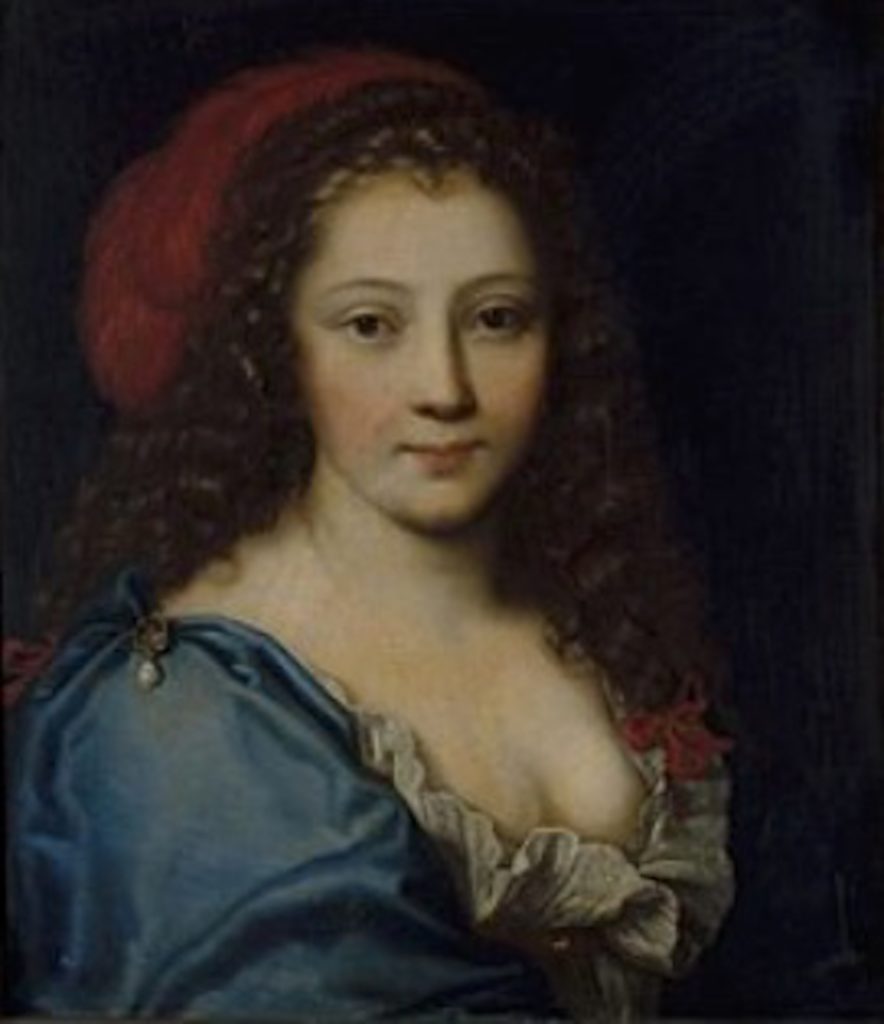
Molière’s wife Armande, 23 years his junior
One, in particular, is that of the actress Armande Béjart, Molière‘s wife. He was 40 when they married, she only 17. She had known him all her life, and must have regarded him as something of a father and teacher. Indeed, he had taken charge of her education as a child.
They were a miserable couple. It is said that Armande was heartless and vain. She was considered a frivolous, giddy flirt, and was quite likely unfaithful (possibly to Lauzun, and possibly to the comte de Guiche); certainly Molière was consumed by jealousy. After the birth of a son, and then a daughter, they lived apart, yet they continued to work together closely on the stage. Molière could simply not stop doting on her . . . and neither could the public. She was a brilliant actress, and Molière was inspired to write many roles specifically for her.

Molière
A mutual friend eventually persuaded Armande to reconcile with her increasingly consumptive and love-sick husband. She did, putting him on a strict meat diet, yet he continued to decline. On the day of the 4th performance of “The Imaginary Invalid,” in which he starred, Armande begged him not to play. He refused, knowing how many depended on the performance for their livelihood.
At the end of play, Molière (ironically playing the part of a hypochondriac) had a convulsion, which he tried to disguise with a harsh laugh. The curtain was hastily lowered and he was carried to his house. Always a comedian, he said on his deathbed: “I have set a detestable example. From now on, no playwright will be content until he has killed an actor.”
After her husband’s death, Armande proved to be anything but giddy and frivolous, fighting passionately for her husband’s right to be respectfully buried by the church (a fight she sadly lost), and then running Molière’s theatrical company with astonishing confidence and aplomb, making a number of difficult decisions that proved to be very successful. He would have been pleased.
I love her saucy attitude, but most of all I love how talented she was, and how capable she proved to be as a widow. Someday I hope to write about her.
[Note: This post was originally published on Hoydens and Firebrands, a website of women who write about the 17th century.]
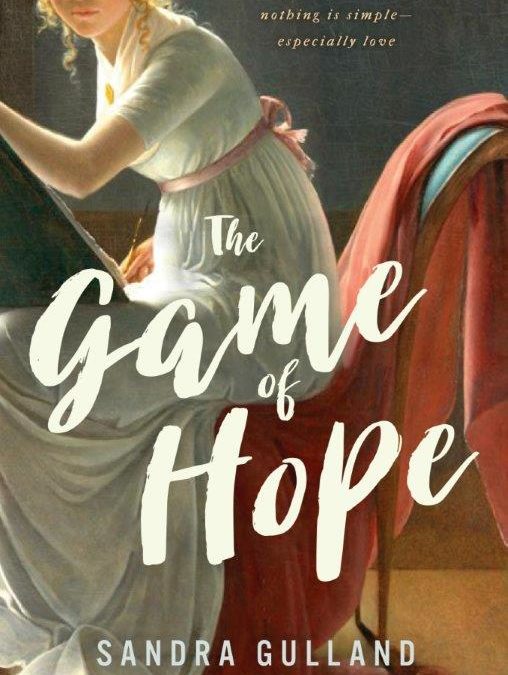
by Sandra Gulland | Apr 15, 2018 | Adventures of a Writing Life, On Plot, On Research, Publication, The Game of Hope, The Shadow Queen, The Writing Process, Young Adult Literature |
On November 2, 2011 (the day before my birthday), my agent, Jackie Kaiser, called to tell me that I’d been made a very tempting offer by Penguin to write two YA novels. One was to be about Josephine’s daughter Hortense, and the second was to be of my choosing.
My husband and I were in Mexico at the time, and two nights before I’d told him that I would never again contract to write a book “in advance.” I simply found it too stressful.
So the timing was a bit ironic. After Jackie’s call, I told my husband, “I’ve just been made an offer I can’t refuse.” Jackie had emailed me a photo of the box the offer had arrived in. Inside were the contract details and chocolates. How charming was that?

Even so, I thought about it carefully for two months. It takes me years (and years!) to write a novel, and I have to feel passionate about it. I have to fall in love with it. So I reread books about Hortense and covered our dining room table with plot points on index cards, considering. I needed to see if there was a story there, an enchanting story about Hortense’s teen years.
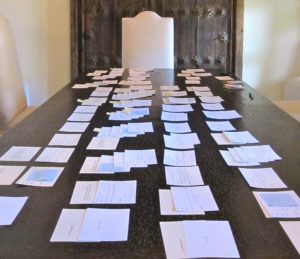
And there was. And it was one I very much wanted to write. By February 9, 2012, I had made up my mind. I would accept the offer. I would write a Young Adult novel about Hortense …
… although not immediately. I was on draft 6.1 of what I was then calling This Bright Darkness, soon to become The Shadow Queen. Plus, as I noted in that blog post of Feb. 9:
Somehow, I feel that I can do all of this all at once: finish This Bright Darkness, begin another adult novel set in the 17th century, write two YAs and a short novel for GoodReads, as well as launch my own e-book imprint.
(Reality has never been my strong suit.)
The Shadow Queen was published and my e-book imprint launched, but the “other adult novel set in the 17th century” had to be put on the back burner and the short novel for GoodReads was regretfully abandoned. Writing a novel requires full attention.

Soon I was carting research books on Hortense back and forth from Mexico to Canada.

I organized my plot cards, shuffled and re-shuffled them.
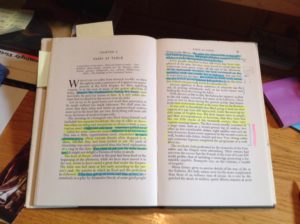
I researched like crazy.
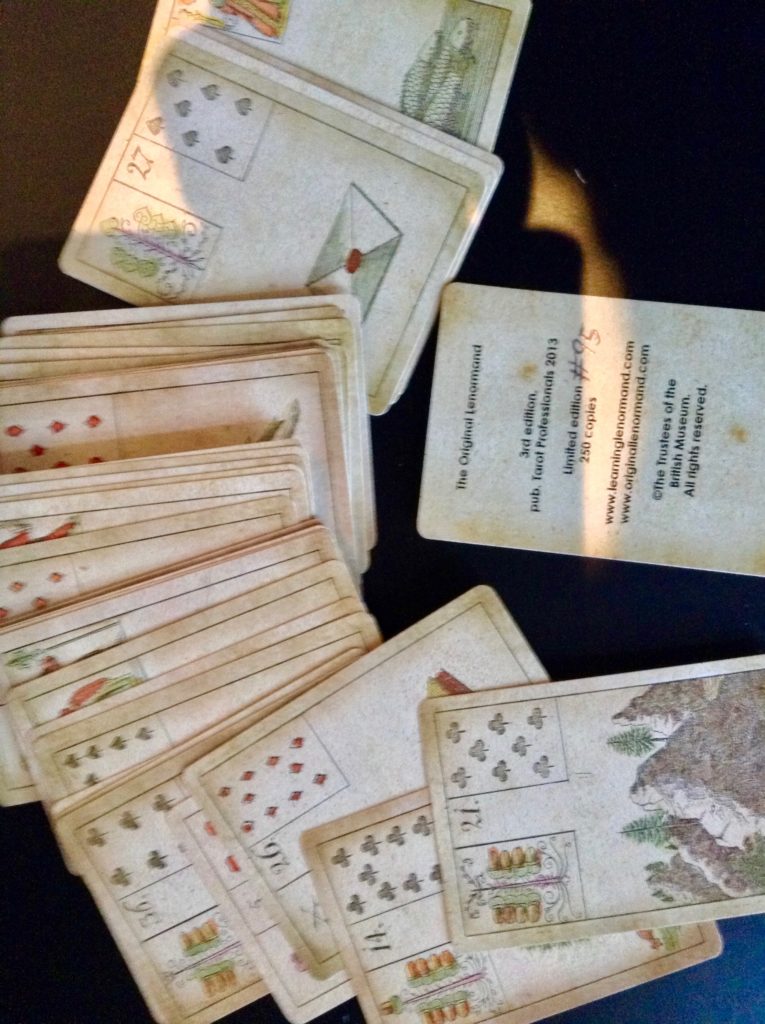
I bought a deck of The Game of Hope and began exploring. (Fun!)
On November 2, 2013, a full two years after receiving the offer from Penguin, I began the first draft.

This is draft 1.7 — that is, the 7th draft of the 1st draft.
Over the next four years, I made two research trips to France.
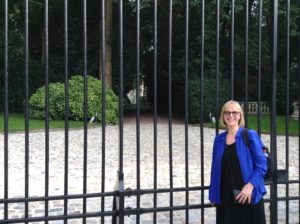
Here I am at the gates to Mortefontaine, the country estate of Napoleon’s brother Joseph.
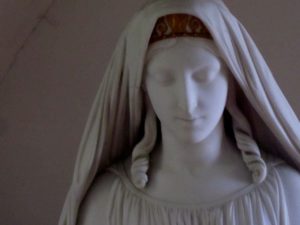
This is a statue of Hortense at her home of exile in Arenenberg, Switzerland, overlooking Lake Constance, now a delightful museum devoted to her memory.

This is a photo of what remains of Madame Campan’s wonderful school in Saint-Germain-en-Laye.
Over time, I had the requisite stack of nine drafts it takes me to write a book.

During the four years it took to write The Game of Hope, it went from being a novel told in the present tense to (at a fairly late stage) a novel told in the past tense. The title changed many, many times, and settled, finally, and happily, on The Game of Hope. The cover changed many times as well.

The Game of Hope, Hortense’s story, is now a book. For real. I’ve yet to hold it in my hands, but I will soon, in Toronto on May 1, the official Canadian publication day.
The amazement I feel about this long and magical process never grows old.
SaveSave

by Sandra Gulland | Apr 1, 2018 | Mistress of the Sun, Questions Readers Ask, The Game of Hope, The Shadow Queen, The Writing Process |
Readers often ask, “What’s next?” The answer to that question depends on when the question is asked, of course. What follows is an evolving diary, begun many, many years ago.
A reader wrote some time ago:
Are you going to write more stories about the court of the Sun King?
Yes!
You did such a great job with the historical details and as I have studied Louis XIV and his court— there are plenty of interesting stories to tell (including the adventures of the Princess Palatine, even La Grande Mademoiselle and Lauzun, a couple that united even after a prison term and old age only to break up over greed).
Indeed! By the way, I love La Grande Mademoiselle, but have yet figured out how to tell her story.
You could even do a trilogy of Louis XIV’s Mistresses— you’ve done La Vallière, next could be Montespan, then Maintenon (the king’s mistress, then second wife).
I believe she’s onto me.
Or a novel on Princess Henrietta as she has a tragic back story with her father being killed, her brothers Charles and James, and she had several romances during her marriage to her cousin Monsieur that are interesting reading, including one lover who was her husband’s boyfriend who falls for Henrietta and became a master of disguise to see her at any cost (De Guiche–who visited her as a fortune teller, a litter bearer and in a domino so he could romance her in Philippe’s presence at a masked ball).
What wonderful suggestions these are. Henriette would indeed be a fantastic subject.
I especially love the De Guiche stories, and in fact wrote many scenes of him hiding in the fireplace and disguised as a fortune-teller, etc., but these scenes, like many, many others, now reside in my cut file.
What I wrote in answer to this letter above:
I am considering writing a novel about Athénaïs (Montespan), but it might focus on her first engagement more than her relationship to the king. I’m not sure. It could also be a story told from the point-of-view of Des Oeillets, her maid who was the go-between between Athénaïs and Voisin, the convicted poisoner.
As this reader points out, there are a wealth of wonderful stories to be told. The hard part is choosing. It took me eight years to write Mistress of the Sun because I kept changing perspectives. I even included the unforgettable Mademoiselle at one point.
I did, in fact, eventually choose to tell the story of The Shadow Queen from the point of view of Des Oeillets (Claudette).
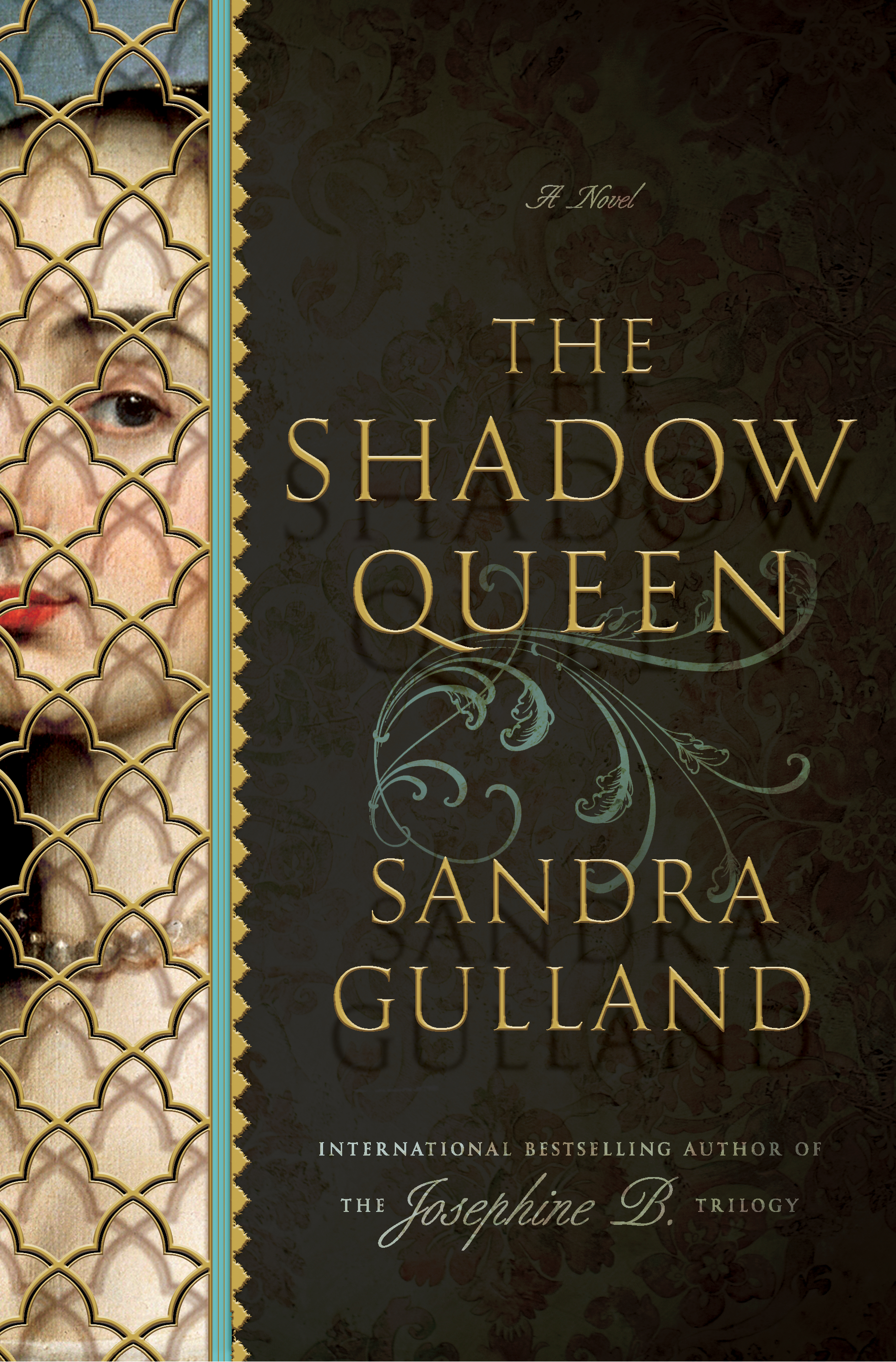
But to answer, “What’s next?” I am writing a Young Adult novel based on the teen years of Josephine’s daughter Hortense. I am back in the Napoleonic world!
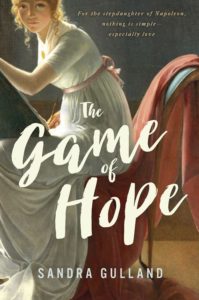
It’s Easter 2018, and Hortense’s story, The Game of Hope, will soon be published in Canada, two months later in the U.S.
As for what’s next? I’m writing — or, at least I think I’m writing — a novel about a teen, a girl falconer in Elizabethan England.
That story about Mademoiselle at the Court of the Sun King continues to haunt me, however. Might that be next next?
{Photo at top is by Evan Dennis on Unsplash.}SaveSave
SaveSave
SaveSave
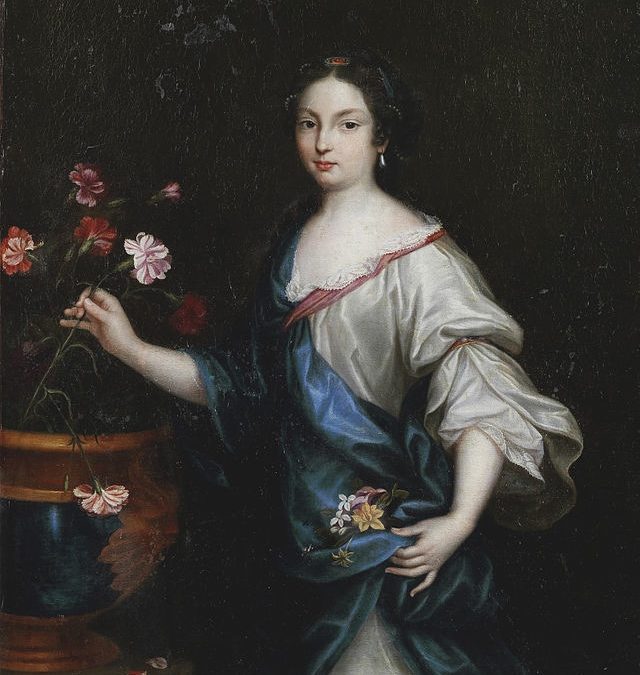
by Sandra Gulland | Mar 31, 2018 | Questions Readers Ask, Resources for Book Clubs, Resources for Readers, The Shadow Queen, The Sun Court Duet |
{Portrait of Claude des Oeillets}
The main character of my novel The Shadow Queen is Claude des Oeillets (dit Claudette), an impoverished young woman from the world of the theater. Socially scorned and denounced by the church, she lives on the fringes of society. As the daughter of a theatrical star, she exists in her mother’s shadow.
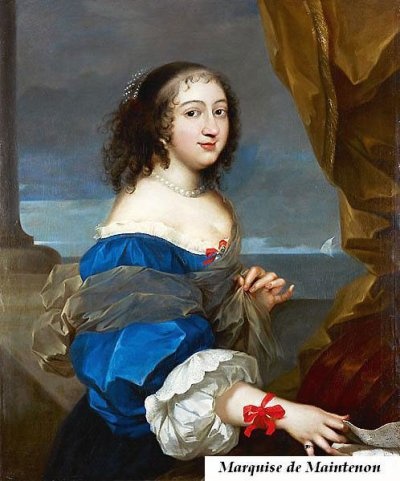
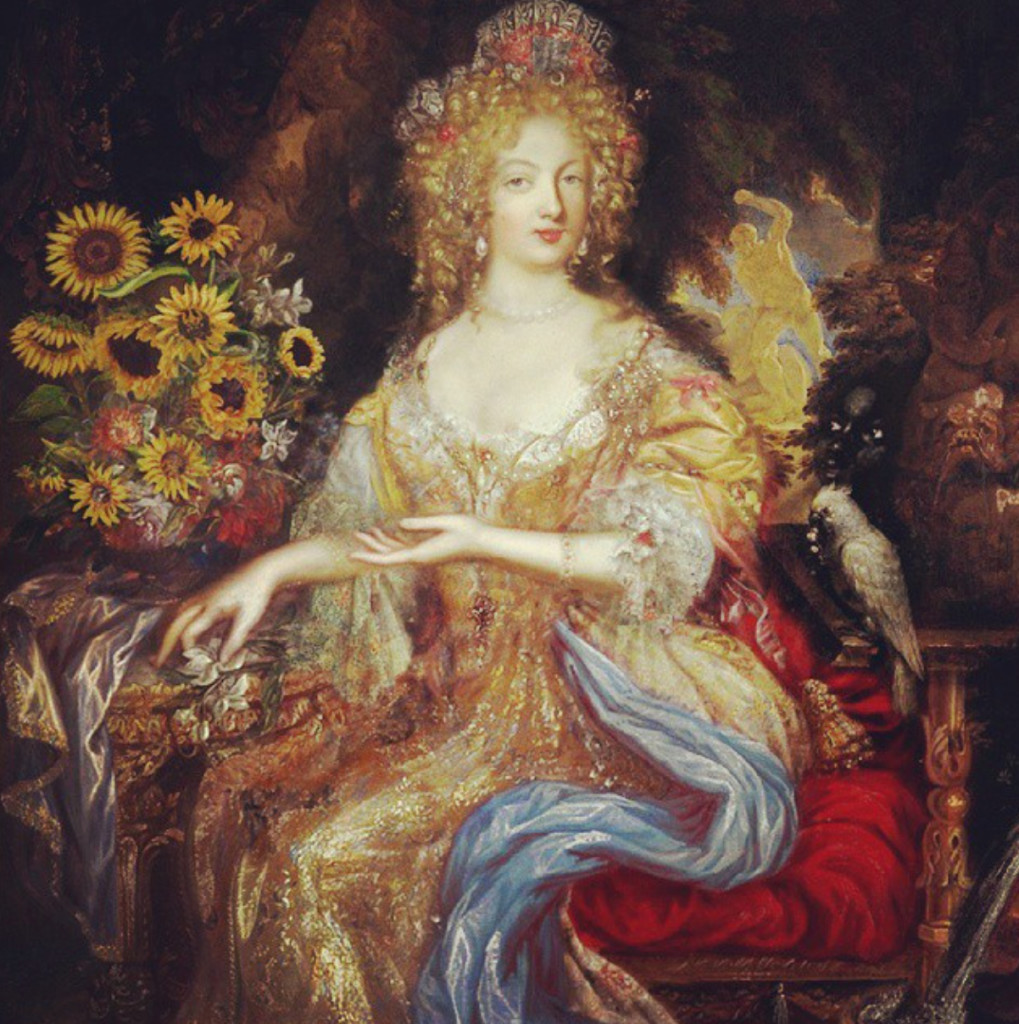
{Portraits of Madame de Montespan}
In contrast, Athénaïs, Madame de Montespan, lives at the heart of high society. She becomes Claudette’s obsessive passion, seeing in her a perfect life—a life without hunger and fear, a life of ease and beauty. Athénaïs’s life is everything Claudette’s is not.
While my other Sun Court novel, Mistress of the Sun, is set largely at Court, in both novels I am exploring the dynamic edge where court and ordinary life meet, with often explosive, unpredictable results. The Shadow Queen is about many things, but at its heart is the relationship between these two woman, Claudette and Athénaïs, who are close in age and share many of the same interests, yet are worlds apart. Claudette envies Athénaïs’s wealth; Athénaïs envies Claudette’s freedom, her life in the theater. Over time, they become dependent upon one-another. As Athénaïs’s devoted maid, Claudette is willing to do anything for her—up to a point.
It’s at that point that Claudette must step out of the shadows—and into the light of her own life.
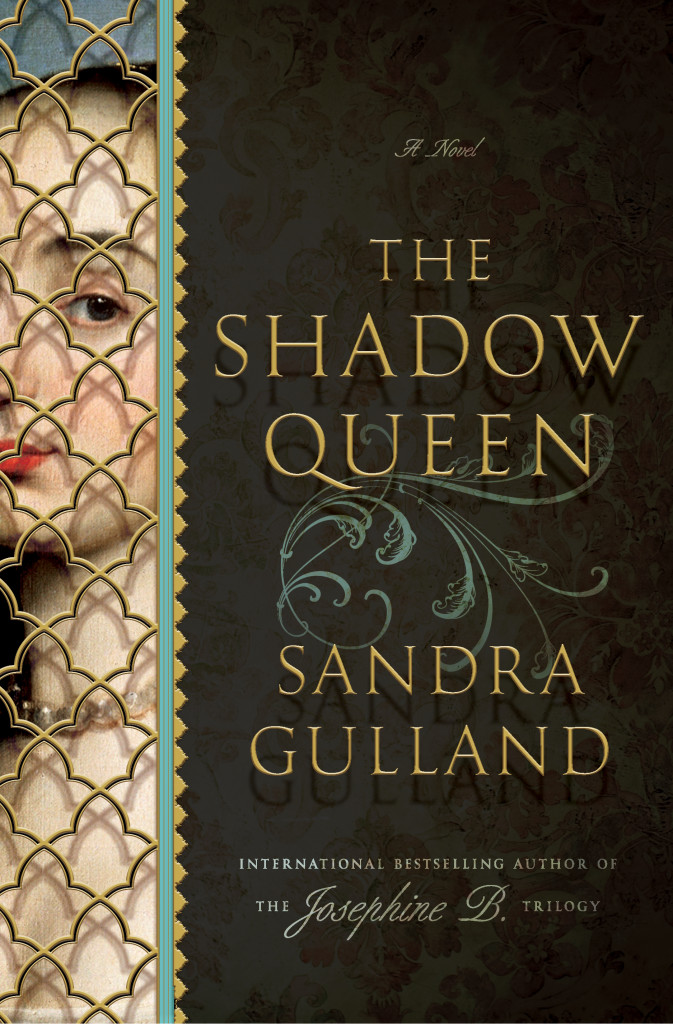
Over the five years I was writing this novel, I considered many titles. In the end, I felt that the title The Shadow Queen metaphorically captured the spirit of this story on a number of levels.
As part of the theatrical world, Claudette lives in the shadows of society. When she joins Athénaïs at court, she becomes the shadow of the official “Shadow Queen.” The story is very much about the ever-fascinating Athénaïs, but it is also about Claudette’s “dark” obsession with her and what Athénaïs represents, an obsession that leads Claudette into the shadow-side of that opulent world, a world of corruption and black magic, the shadow-side of want and hunger.
Who, then, is queen of shadows? Officially, of course, it is Athénaïs, but it could be others as well—Madame Voisin, for example, a woman who fulfills dark wishes, and even our “Good Knight” Claudette.SaveSave
SaveSave
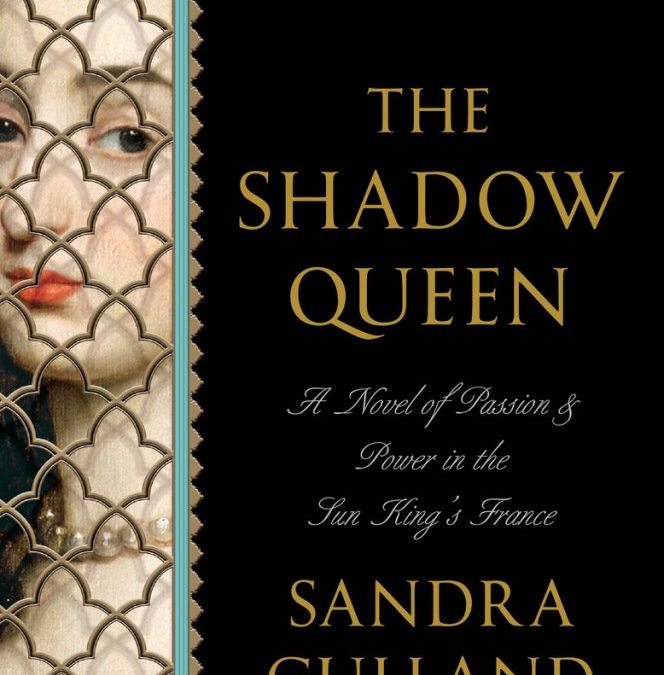
by Sandra Gulland | Mar 30, 2018 | Publication, Questions Readers Ask, Resources for Book Clubs, Resources for Readers, The Shadow Queen |
A significant number of early reviewers of my new novel THE SHADOW QUEEN have expressed displeasure with the title; they feel it is misleading. They expected the novel to be the story of the Sun King’s official mistress, Athénaïs, Madame de Montespan, a position often referred to as “the shadow queen.” The title led readers to believe that they were going to get one story, when in fact they got another. I apologize if they feel that they were mislead.
These readers were responding to the Advance Readers’ Copies (“ARCs”) of the novel. The hardcover, with cover-flap copy, will make it clearer what, in fact, the story is about, and I hope that this will dispel some of the confusion.
Why that title?
But to address the concerns of some of my readers: Why have I titled this novel The Shadow Queen?
The main character of the novel is Claude des Oeillets (dit Claudette), an impoverished young woman from the world of the theatre. Socially scorned and denounced by the church, she lives on the fringes of society. As well, as the daughter of a theatrical star, she exists in her mother’s shadow.
In contrast, Athénaïs, Madame de Montespan, lives at the heart of high society. She becomes Claudette’s obsessive passion, seeing in her a perfect life, a life without hunger and fear, a life of ease and beauty. Everything Claudette’s life is not.
The novel is about many things, but at its core is the relationship between these two woman, Claudette and Athénaïs, who are close in age and share many of the same interests, yet are worlds apart. In the end, they become dependent upon one-another. Claudette, as Athénaïs’s devoted and even start-struck servant, is willing to do anything for her—up to a point.
And it’s at that point that Claudette must step out of the shadows—and into the light of her own life.
Over the five years I was writing this novel, I considered many, many titles. In the end, I was very happy with the title The Shadow Queen, a title enthusiastically embraced by a group of 50 writers, a number of whom had read the novel and felt that it was appropriate.
I am touched by the passionate concern of my readers, even when critical. Of course I have been both surprised and disquieted that some have objected. I personally feel that the title The Shadow Queen captures the spirit of this story on a number of levels. Claudette exists in the shadow of her mother, a drama queen. When she joins Athénäis at court, she becomes her shadow, the shadow of the official “Shadow Queen.” And, although the story is very much about the ever-fascinating Athénäis—as well as about Claudette’s obsession with her and all that she represents—it’s really a metaphorical title, more than a literal one.

by Sandra Gulland | Jan 14, 2017 | Adventures of a Writing Life, Resources for Writers, The Shadow Queen, The Writing Process |
{Lovely San Miguel de Allende, where I am right now. A photo by Leah Feldon, it is similar to the view from my writing room.}
Yesterday was a big day for me: I woke at 4:00am, and shortly before 8:00am I emailed my manuscript to my editor and agent. It was Friday 13. I am not superstitious, but that did give me pause.
Some writers are able to write a perfectly good novel in two or three drafts. I am not one of those writers! It takes me years (and years) to uncover the complexities, the depths and the “fall line” of a story. My revision process is extremely slow, in spite of all the techniques I use (i.e. plotting) to try to speed it up. I do hope I’m getting closer.

J.K. Rowling’s plot guideline. No doubt it helped!
Moonsick (working title) is my novel for Young Adults, a story based on the teen years of Josephine Bonaparte’s daughter Hortense. Is the novel too giddy? Too dark? I’m frankly not sure. This is why beta readers — teen beta readers — will be important to my final revision process.
Teen beta readers wanted
Later that same day I sent out a newsletter that included a call for teen beta readers. I now have three readers, and (I hope) more to come. I’d also like to find a book club that reads YA fiction — not exclusively, but often enough that they are comfortable with the genre. It occurs to me that a high school English class might be interested in reading it (although it really is a novel for girls). Let me know if you have a teen reader or a book club or class to suggest.
Going back to where it all began
Looking for reader guidelines I’ve used in the past, I discovered a blog post I wrote in February of 2012 — five years ago! — announcing that I would be writing a YA novel about Hortense.
Hortense as a teen — the subject of my next-next novel (Surprise!)
(Note that This Bright Darkness, mentioned in the post, was the working title of The Shadow Queen, which was published two years later, in the spring of 2014.)

Lovely Hortense as a teen. Energetic, creative, talented — a bright spark.
SaveSave




























